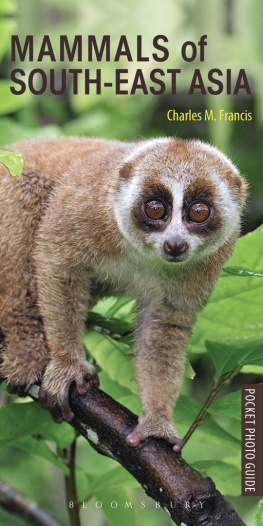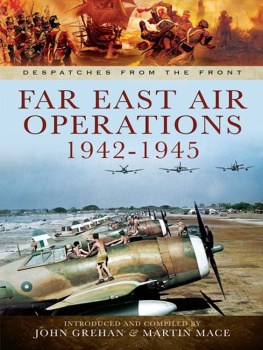Paul H. Kratoska - South East Asia: Colonl Hist V2
Here you can read online Paul H. Kratoska - South East Asia: Colonl Hist V2 full text of the book (entire story) in english for free. Download pdf and epub, get meaning, cover and reviews about this ebook. year: 2004, publisher: Routledge, genre: Politics. Description of the work, (preface) as well as reviews are available. Best literature library LitArk.com created for fans of good reading and offers a wide selection of genres:
Romance novel
Science fiction
Adventure
Detective
Science
History
Home and family
Prose
Art
Politics
Computer
Non-fiction
Religion
Business
Children
Humor
Choose a favorite category and find really read worthwhile books. Enjoy immersion in the world of imagination, feel the emotions of the characters or learn something new for yourself, make an fascinating discovery.

- Book:South East Asia: Colonl Hist V2
- Author:
- Publisher:Routledge
- Genre:
- Year:2004
- Rating:4 / 5
- Favourites:Add to favourites
- Your mark:
- 80
- 1
- 2
- 3
- 4
- 5
South East Asia: Colonl Hist V2: summary, description and annotation
We offer to read an annotation, description, summary or preface (depends on what the author of the book "South East Asia: Colonl Hist V2" wrote himself). If you haven't found the necessary information about the book — write in the comments, we will try to find it.
South East Asia: Colonl Hist V2 — read online for free the complete book (whole text) full work
Below is the text of the book, divided by pages. System saving the place of the last page read, allows you to conveniently read the book "South East Asia: Colonl Hist V2" online for free, without having to search again every time where you left off. Put a bookmark, and you can go to the page where you finished reading at any time.
Font size:
Interval:
Bookmark:

- VOLUME II Empire-building during the nineteenth century
- Introduction to Volume II
- General
- Maps of South and East Asia Since 1800 VICTOR PURCELL
- Diversity and Unity in South East Asia JAN O. M. BROEK
- Farewell to Empire WILLIAM L. LANGER
- British and Dutch Imperialism: A Comparison H. L. WESSELING
- The Debate on French Imperialism, 19601975 H. L. WESSELING
- Anglo-French Rivalry JOHN L. CHRISTIAN
- Progress and Welfare in South East Asia J. S. FURNIVALL
- The Dutch
- Dutch Expansion in the Indonesian Archipelago around 1900 and the Imperialism Debate1 ELSBETH LOCHER-SCHOLTEN
- Economic Aspects of the Dutch Expansion in Indonesia, 18701914 J. THOMAS LINDBLAD
- Warmakers in the Archipelago: Dutch Expeditions in Nineteenth Century Indonesia J. A. DE MOOR
- Colonial Policy and Practice: Netherlands India J. S. FURNIVALL
- The British In Burma
- Anglo-Burmese Conflicts in the 19Th Century: A Reassessment of Their Causes D. G. E. HALL
- The Administration of Burma CHARLES CROSTHWAITE
- The British in the Malay Peninsula
- Early Penang and the Rise of Singapore, 18051832 C. D. COWAN
- Malaysia: The Nineteenth Century MARY TURNBULL
- The Nineteenth and Early Twentieth Centuries RICHARD ALLEN
- The British In Borneo
- Sarawak
- The State of North Borneo OWEN RUTTER
- The Third Republic in Indo-China HERBERT INGRAM PRIESTLEY
- Colonial Wars before 1914: The Case of France in Indochina C. FOURNIAU
- The Development of French Administration in Indochina: French Administrative Accomplishments THOMAS E. ENNIS
- The Americans In The Philippines
- The Pacification of the Philippines GAREL A. GRUNDER AND WILLIAM E. LIVEZEY
- The American Mood and the Philippines, 18981899 PETER G. GOWING
- Philippine Society and American Colonialism NORMAN OWEN
- Muslim-American Relations in the Philippines, 18991920 PETER G. GOWING
Font size:
Interval:
Bookmark:
Similar books «South East Asia: Colonl Hist V2»
Look at similar books to South East Asia: Colonl Hist V2. We have selected literature similar in name and meaning in the hope of providing readers with more options to find new, interesting, not yet read works.
Discussion, reviews of the book South East Asia: Colonl Hist V2 and just readers' own opinions. Leave your comments, write what you think about the work, its meaning or the main characters. Specify what exactly you liked and what you didn't like, and why you think so.



